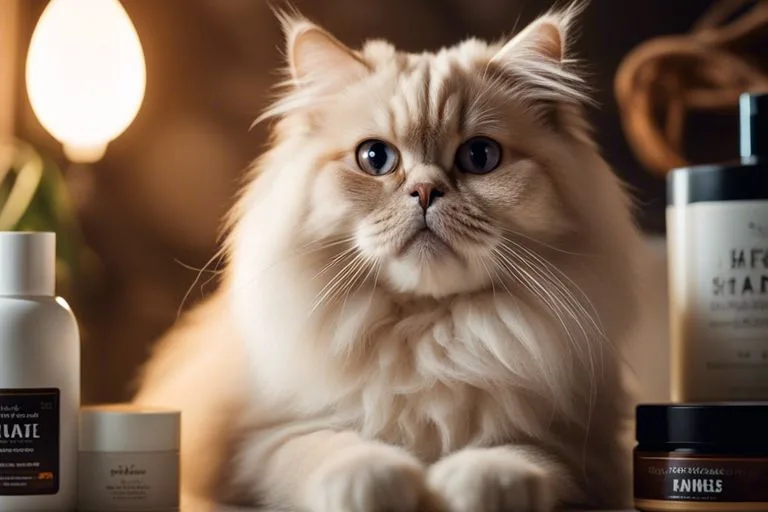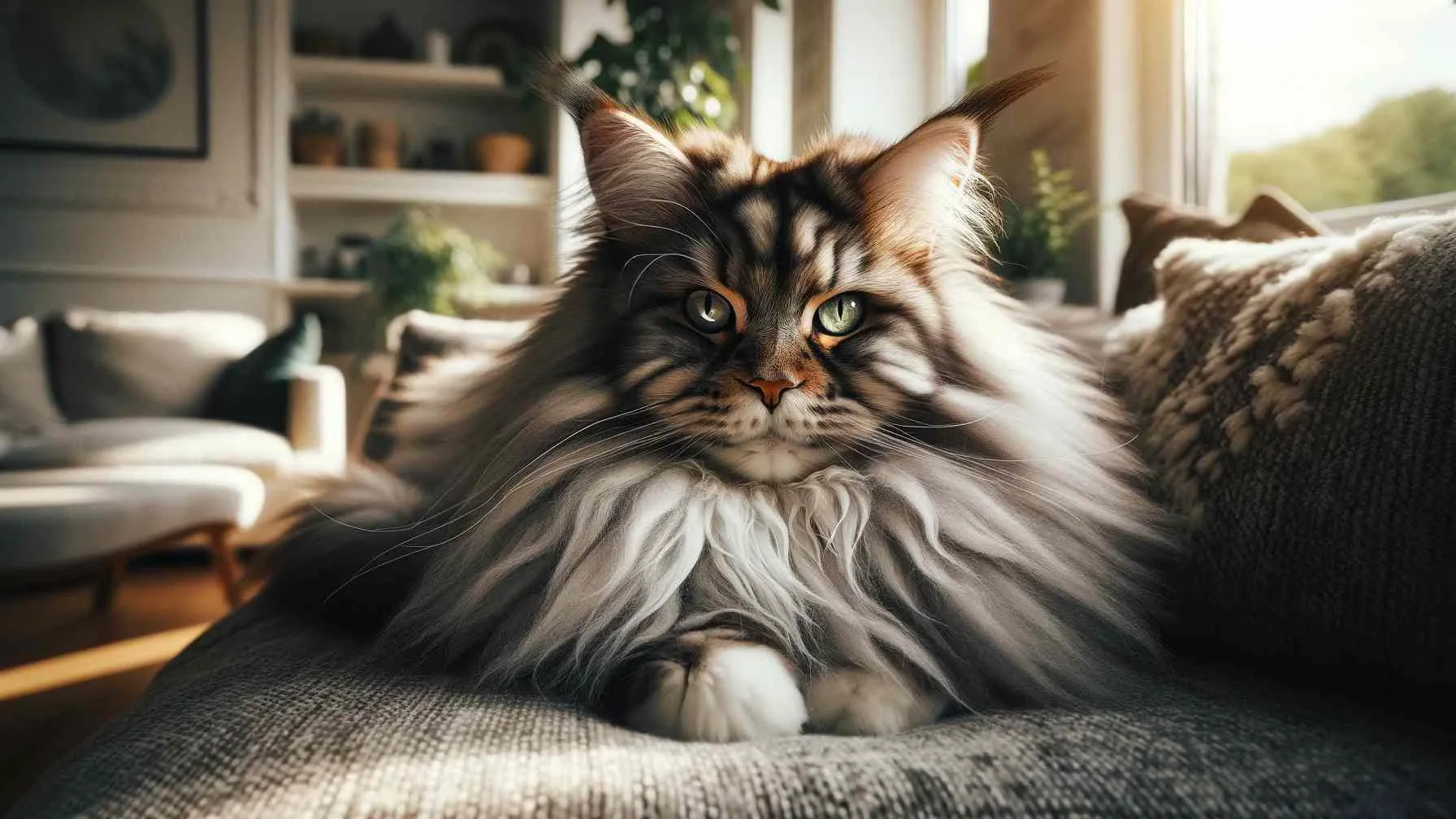Are you finding that your Persian cat is constantly scratching and suffering from dry, itchy skin? It’s important to address this issue as dry skin can lead to more serious health problems if left untreated. Fortunately, there are effective solutions that can help alleviate your cat’s discomfort and improve their overall skin health. In our blog post, we’ll discuss the common causes of dry skin in Persian cats and provide you with effective solutions to help your feline friend find relief.
Key Takeaways:
- Proper grooming: Regular brushing and using a high-quality, moisturizing shampoo can help alleviate a Persian cat’s dry skin.
- Dietary adjustments: Incorporating omega-3 fatty acids and other essential nutrients into your cat’s diet can improve their skin and coat health.
- Humidifier usage: Adding moisture to the air with a humidifier can provide relief for your cat’s dry skin, especially during dry winter months.
- Veterinary consultation: If your cat’s dry skin persists, consulting with a veterinarian can help identify any underlying health issues and determine the best course of action.
- Avoiding harsh chemicals: Using gentle, natural products and avoiding harsh chemicals can prevent further irritation and dryness in your Persian cat’s skin.
Causes of Dry Skin in Persian Cats
Assuming you’re struggling with your Persian cat’s dry skin, it’s essential to understand that several factors can contribute to this condition. Identifying the root cause of your cat’s dry skin will help you determine the most effective treatment and preventive measures. Here are some common causes of dry skin in Persian cats:
Environmental Factors
Environmental factors can play a significant role in causing dry skin in Persian cats. Dry, low-humidity environments can strip the moisture from your cat’s skin, leading to dryness and flakiness. Excessive exposure to harsh weather conditions can also contribute to dry skin. If you notice that your Persian cat’s skin tends to get drier during certain seasons or in specific areas of your home, environmental factors may be the culprit.
- Low humidity levels
- Harsh weather conditions
Any sudden changes in your cat’s environment or noticeable patterns in dry skin should prompt you to consider the impact of environmental factors on your feline friend.
Nutritional Causes
Another potential cause of dry skin in Persian cats is nutritional deficiencies. A diet lacking in essential fatty acids, vitamins, and minerals can manifest as dry, flaky skin in your cat. Inadequate hydration can also contribute to dry skin, emphasizing the importance of providing your Persian cat with a well-balanced diet and access to fresh water.
Common Health Conditions
Certain health conditions, such as allergies, dermatitis, and thyroid issues, can also contribute to dry skin in Persian cats. If your cat’s dry skin is accompanied by other symptoms such as itching, redness, or hair loss, it’s crucial to have them evaluated by a veterinarian to rule out any underlying health concerns.
Grooming Habits Impact
Your Persian cat’s grooming habits, or lack thereof, can impact the condition of their skin. Inadequate grooming, infrequent brushing, or using harsh grooming products can strip the skin of its natural oils, leading to dryness. On the other hand, over-grooming can also irritate the skin and contribute to dryness. Evaluating and adjusting your cat’s grooming routine can help improve the health of their skin and coat.
Recognizing the Signs of Dry Skin
Keep an eye out for the signs of dry skin in your Persian cat. These can include: excessive itching, flakiness, redness, or irritation of the skin, dull or brittle coat, and patches of bare skin. Pay attention to any changes in your cat’s grooming habits, as increased licking or scratching may indicate discomfort due to dry skin.
Symptoms to Look Out For
When it comes to recognizing the signs of dry skin in your Persian cat, be on the lookout for symptoms such as excessive scratching, dry and flaky skin, redness or irritation. Additionally, pay attention to any changes in your cat’s behavior or grooming habits, as these may also be indicative of dry skin.
When to Seek Professional Advice
If you notice any of the aforementioned symptoms persisting for an extended period, or if your cat’s dry skin is accompanied by other concerning issues such as hair loss or open sores, it is essential to seek professional advice. A veterinarian will be able to properly diagnose the underlying cause of your cat’s dry skin and prescribe the appropriate treatment plan.
Effective Solutions for Your Cat’s Dry Skin
Now that you understand the potential causes of your Persian cat’s dry skin, it’s time to explore effective solutions to alleviate this discomfort. There are a variety of remedies and care tips that can help improve your cat’s skin health and bring back their shiny coat.
Home Remedies and Care Tips
If you notice dry skin on your Persian cat, there are several home remedies and care tips that you can try to provide relief. Start by ensuring your home has proper humidity levels, as dry air can exacerbate your cat’s symptoms. Additionally, using a humidifier in your home can help combat dryness in the air. Regular grooming and brushing your cat’s fur can also remove dead skin and distribute natural oils, providing relief for dry skin. Lastly, consider incorporating supplements like omega-3 fatty acids into your cat’s diet to promote healthy skin and a shiny coat.
- Proper humidity levels in your home
- Regular grooming and brushing
- Supplements such as omega-3 fatty acids
Perceiving early signs of dry skin and promptly addressing them with these home remedies and care tips can help prevent further discomfort for your Persian cat.
Recommended Dietary Changes
Another key aspect to consider when addressing your cat’s dry skin is their diet. By making some recommended dietary changes, you can provide essential nutrients that promote healthy skin and a lustrous coat. Incorporating high-quality, moisturizing foods into your cat’s diet, such as wet food and foods rich in omega-3 fatty acids, can help improve their skin health from the inside out.
Advanced Treatments and Supplements
In some cases, more advanced treatments and supplements may be necessary to effectively address your Persian cat’s dry skin. This can include specialized skin moisturizers and shampoos designed specifically for moisturizing and soothing dry skin. Additionally, incorporating supplements such as fish oil into your cat’s diet can help improve skin health and provide relief from dryness.
- Specialized skin moisturizers and shampoos
- Supplements such as fish oil
It is important to consult with your veterinarian to determine the most appropriate advanced treatments and supplements for your cat’s specific needs.
Choosing the Right Grooming Products
When managing your cat’s dry skin, it’s essential to choose the right grooming products to ensure they are effectively addressing the problem. Look for grooming products specifically formulated for moisturizing and soothing dry skin, such as gentle, hydrating shampoos and conditioners. Avoid harsh products that can further irritate your cat’s skin and opt for those that promote hydration and nourishment.
Preventing Dry Skin in the Future
Your Persian cat’s dry skin can be a recurring problem if not properly addressed. To prevent future episodes of dry skin, it’s important to take proactive measures to keep your cat’s skin healthy and moisturized. It’s essential to stay informed about 5 Treatments For Cat Dry Skin and incorporate them into your cat’s regular grooming routine.
Long-Term Skin Care Strategies
To ensure your Persian cat’s skin stays healthy in the long run, it’s important to provide proper nutrition and optimal hydration. Add omega-3 fatty acids to your cat’s diet through fish oil supplements or specially formulated cat food. This can help maintain healthy skin and a shiny coat. Additionally, invest in a high-quality humidifier to increase the moisture levels in your home, which can benefit your cat’s skin.
Regular Check-Ups and Monitoring
Regular veterinary check-ups are essential for monitoring your cat’s skin health. Your veterinarian can assess your cat’s skin condition and recommend preventive measures based on their specific needs. Additionally, it’s important to keep an eye on any changes in your cat’s skin, such as excessive dryness or flakiness. By closely monitoring your cat’s skin, you can detect any issues early and take appropriate action.
To wrap up
If you have been struggling with your Persian cat’s dry skin, remember that there are effective solutions available to help alleviate this issue. By incorporating regular grooming, proper nutrition, and hydration into your cat’s routine, you can make a significant difference in their skin health. Additionally, consulting with a veterinarian to rule out any underlying health conditions and using appropriate moisturizing products can also provide relief. It may take some trial and error to find the best combination of solutions for your cat, but with patience and perseverance, you can help improve their skin and overall well-being.
FAQ
Q: What causes dry skin in Persian cats?
A: Dry skin in Persian cats can be caused by various factors including genetics, diet, environmental conditions, and grooming habits. Persian cats are prone to dry skin due to their long fur which can trap oils and dead skin cells, leading to flakiness and irritation. Additionally, dry air, allergens, and inadequate grooming can also contribute to this issue.
Q: How can I effectively manage my Persian cat’s dry skin?
A: To effectively manage your Persian cat’s dry skin, it is important to provide a well-balanced diet that includes essential fatty acids to promote healthy skin and coat. Regular grooming with a high-quality brush can help remove excess oils and dead skin cells, preventing matting and promoting healthier skin. Using a humidifier in your home can also help maintain optimal moisture levels in the air, reducing the likelihood of dry skin. Additionally, consulting with your veterinarian for recommendations on hypoallergenic shampoos and supplements can further aid in managing your cat’s dry skin.
Q: Are there any specific products or remedies recommended for Persian cats with dry skin?
A: There are several products and remedies that can help alleviate dry skin in Persian cats. Look for shampoos and conditioners specifically formulated for cats with sensitive skin, as they are often free of harsh chemicals and fragrances that can exacerbate dryness. Omega-3 fatty acid supplements can also be beneficial in supporting healthy skin and reducing inflammation. Additionally, incorporating coconut oil or aloe vera into your cat’s grooming routine can help moisturize and soothe dry, irritated skin. However, it is important to consult with a veterinarian before using any new products to ensure they are safe and appropriate for your cat.



